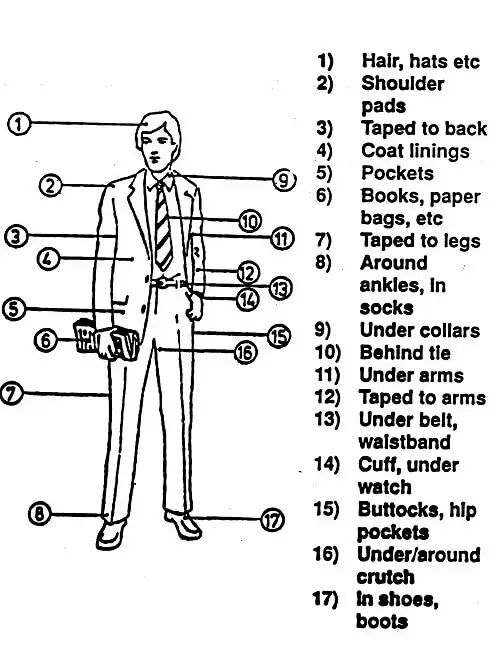- All Stores & Supplies to vessel must be checked for content & Security. The Checks should so far as possible be carried out before the items are taken on board.
- If Unaccompanied luggage or bags are received, they must be checked prior moving them into the accommodation. The Designated area for searching them is on the main deck, adjacent midship stores.
- The Diagrams illustrate various places that Male & Female visitors could use to smuggle weapons or other harmful devices into the vessel. The following method is to be adapted to Search Visitors:


- The visitor should be asked to stand with his arms raised on the side and legs slightly apart.
- Start the search from the collar downwards running your hands over the shoulders, below the arms, chest (front and back, paying special attention to the spinal area), down the legs, lifting the trouser base to inspect the socks and shoes. Run your hands over the arms to ensure nothing is hidden under the armpit and in the sleeves. Check the watch for any signs of tampering and the hands for their contents, if any.
- If a hat is worn, ask the visitor to remove the hat and inspect its insides.
- Ask the visitor to take out anything that appears suspect in the pockets.
- If a coat is worn, inspect the labels and collar carefully.
- Check the contents of any baggage, briefcase or toolbox carried by the visitor to ascertain if there is anything harmful in it or not matching with the work expected to be carried out by the visitor (example, large tools inside the bag of a person who has come for computer repairs).
You may find below useful:
ISPS code – A measure to enhance the security of Ships and Port facilities

Leave a Reply